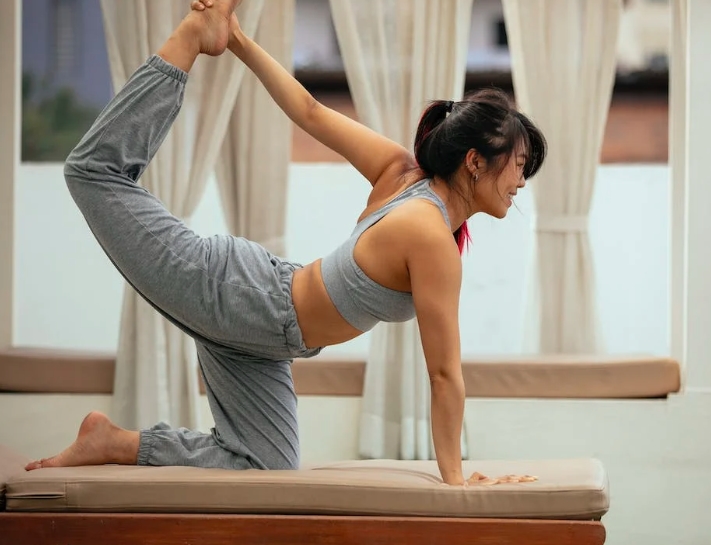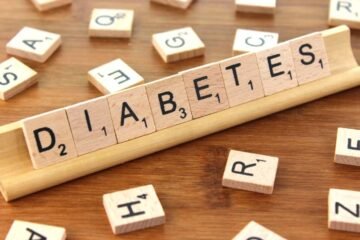Physical activity and exercise are essential components of a healthy lifestyle. They help to promote overall health and well-being, reduce the risk of developing chronic diseases, and improve mental health. The purpose of this article is to explore the benefits of physical activity and exercise, and to provide practical advice on how to stay active and healthy. This article will cover the importance of physical activity and exercise for overall health, the health benefits of regular exercise, and tips for incorporating physical activity into your daily routine.
Physical activity and exercise can help to reduce the risk of developing certain chronic illnesses, such as heart disease, type 2 diabetes, and certain types of cancer. Regular physical activity can also help to improve mental health and reduce stress. Additionally, participating in regular physical activity and exercise can help to improve your mood, reduce feelings of depression and anxiety, and increase self-esteem. With these benefits in mind, it is important to make an effort to stay active and healthy.
In this article, you will learn about the importance of physical activity and exercise, the health benefits that can be gained from regular exercise, and tips for incorporating physical activity into your daily routine. By reading this article, you will be better informed about how to stay active and healthy and reap the rewards of a healthy lifestyle.

The definition of physical activity and exercise:
The Difference between Physical Activity and Exercise
Physical activity is any bodily movement that works your muscles. It can include activities such as running, walking, cycling, swimming, dancing, and playing sports. Physical activity is any movement that you do that is not sitting still. Physical activity does not have to be planned or structured, it can be as simple as taking a walk around the block or going for a bike ride with your family.
Exercise is a type of physical activity that is planned, structured and repetitive. It is usually done to improve or maintain physical fitness and overall health. Examples of exercise include weight lifting, running, swimming, or playing a sport. Exercise can be done in a gym, at home, or outdoors. It is important to choose activities that you enjoy and stick with them for the best results.
The benefits of physical activity and exercise:
The benefits of physical activity and exercise are considerable and wide-ranging. Regular physical activity and exercise can have numerous positive impacts on physical health. For example, it can help with weight management, reduce the risk of chronic diseases, improve cardiovascular health, and strengthen bones and muscles. Additionally, physical activity and exercise can have a positive effect on mental health. It can reduce stress and anxiety, improve mood and self-esteem, and improve cognitive function. Lastly, physical activity and exercise can have social benefits as well. Activities can provide an opportunity to interact with other people, as well as a sense of belonging. All of these benefits make physical activity and exercise an important part of any healthy lifestyle.
The risks of a sedentary lifestyle:
A sedentary lifestyle, defined as a lifestyle with minimal physical activity, has become more common in recent years as people increasingly work desk jobs and use technology to simplify everyday tasks. While a sedentary lifestyle may seem appealing in the short-term, it can have serious long-term health risks.
Sitting for long periods of time can be detrimental to physical health. Prolonged sitting can cause poor posture, muscle strain, and even lead to chronic back pain. It can also lead to decreased muscle mass, increased stress, and decreased metabolism.
Furthermore, a sedentary lifestyle can have serious implications for overall health. People who are physically inactive are at an increased risk of developing obesity, diabetes, heart disease, and cancer. Research has shown that people who are inactive are more likely to have higher risk factors for these diseases than those who are active.
In addition to the physical risks, a sedentary lifestyle can have a negative impact on mental health as well. People who are inactive have an increased risk of developing depression, anxiety, and cognitive decline. They are also more likely to experience feelings of low self-esteem, stress, and fatigue.
Overall, a sedentary lifestyle is associated with numerous health risks. It can lead to physical problems such as poor posture, muscle strain, and decreased metabolism, as well as increased risk of obesity, diabetes, heart disease, and cancer. It can also have serious implications for mental health, such as depression, anxiety, cognitive decline, and low self-esteem. Taking the steps to reduce sedentary behavior and increase physical activity can help to reduce these risks and improve overall health.
How to Get Started with Physical Activity and Exercise:
For those who are new to physical activity and exercise, there are a few important tips to consider prior to starting. Firstly, it is important to set achievable goals. Begin by establishing a realistic timeline and creating an exercise plan that fits your lifestyle and schedule. Secondly, find an activity that you find enjoyable and sustainable. This is key to ensuring you stick with your plan and are not overwhelmed by the process. Exercise should be fun and something you look forward to doing, not a chore. Thirdly, always warm up and cool down prior to and after exercise. This will help to reduce the risk of injury and increase the effectiveness of your workout. Lastly, it is important to have realistic expectations and to be patient. Don’t expect to get fit overnight and remember that Rome was not built in a day. With consistency and dedication, you will soon be on your way to achieving your goals.
Types of Physical Activity and Exercise
Cardiovascular Exercise: Cardiovascular exercise involves activities that increase your heart rate and breathing for an extended period of time. Examples of cardiovascular exercise include jogging, cycling, swimming, walking, elliptical training, and rowing. These activities can help improve your heart health, reduce the risk of chronic diseases, and promote weight loss.
Strength Training: Strength training involves activities that use resistance to improve your muscular strength and endurance. Examples of strength training include weight lifting, bodyweight exercises, and resistance band exercises. Strength training can help improve your overall fitness, build lean muscle mass, and reduce body fat.
Flexibility Training: Flexibility training involves activities that focus on stretching and improving the range of motion of your joints. Examples of flexibility training include yoga, pilates, and tai chi. Flexibility training can help improve your posture, reduce the risk of injury, and improve your balance.
How to stay motivated:
Staying motivated to continue with physical activity and exercise can be a challenging task. However, there are some strategies that can help to stay on track and keep yourself motivated.
One of the best strategies to stay motivated is to set small goals. Setting small goals will help you to break down your big goals into achievable tasks and make it easier to track your progress. Celebrating small successes along the way will also help to keep you motivated to continue.
Another great way of staying motivated is to have a workout buddy or join a fitness community. Having someone to exercise with can make physical activity more enjoyable and help to stay committed. Additionally, having someone to provide motivation and share experiences with can help to keep you motivated and on track.

It is also important to reward yourself after completing your goals. Celebrating successes and rewarding yourself with a treat or something special can help to keep you motivated. Additionally, it is important to have fun and enjoy the process. Taking a break and doing something fun will help to keep you motivated and energized.
Finally, it is important to stay focused and consistent. Staying focused on the end goal and being consistent with your physical activity and exercise will help to stay motivated. Additionally, you can also track your progress and evaluate your goals to ensure that you are staying motivated.
Conclusion
Physical activity and exercise are essential for leading a healthy, happy life. Not only do they improve physical health and wellbeing, but they also improve mental health and wellbeing, too. Regular physical activity and exercise can help reduce the risk of many chronic diseases such as heart disease, diabetes, obesity, and even some cancers. Exercise can also improve mood and reduce stress, anxiety, and depression.
Being active and exercising also can help people maintain a healthy weight and increase their energy levels. A regular exercise routine can also help improve sleep and cognitive functioning. Furthermore, exercise can help to improve self-esteem, increase confidence, and foster a positive body image.
In conclusion, physical activity and exercise are essential in order to stay healthy and happy. Regular physical activity and exercise can help to reduce the risk of diseases, improve mood and reduce stress, improve sleep and cognitive functioning, and even increase confidence and self-esteem. Taking the time to be active and exercise can make a huge difference in one’s overall health and wellbeing. So, start moving and stay active to stay healthy!
FAQs
1. What are the benefits of physical activity?
Regular physical activity can improve your muscle strength and boost your endurance. It can also help you lose weight, reduce your risk of chronic diseases like type 2 diabetes and heart disease, improve your mental health and mood, and promote better sleep.
2. What is the best type of exercise for staying healthy?
The best type of exercise for staying healthy is one that you enjoy and can stick with in the long run. Any type of exercise that gets your heart rate up and makes you sweat can help you stay healthy. This includes walking, running, biking, swimming, and more.
3. How much physical activity is recommended each day?
The World Health Organization recommends at least 150 minutes of moderate-intensity physical activity or 75 minutes of vigorous-intensity physical activity per week for adults. It is also recommended for adults to do muscle-strengthening activities at least twice a week.
4. How does physical activity benefit mental health?
Physical activity can help reduce symptoms of depression and anxiety, improve overall mental health, and increase self-esteem. Regular physical activity can also help you manage stress and reduce negative thoughts.
5. What are the benefits of exercise for elderly people?
Exercise can help elderly people maintain a healthy weight, improve balance and coordination, and reduce the risk of falls. It can also help them maintain independence and prevent chronic conditions like diabetes and heart disease.
6. Can physical activity help with weight loss?
Yes, regular physical activity can help you lose weight and keep it off. It can also help you maintain a healthy weight by burning calories and reducing your appetite.
7. What are the risks associated with physical activity?
The most common risks associated with physical activity are injury and overexertion. It is important to start slowly and gradually increase your activity level to reduce the risk of injury.
8. What are the best exercises for losing weight?
The best exercises for losing weight are those that burn the most calories and keep your heart rate up. This includes activities like running, swimming, biking, and circuit training.
9. How often should I exercise?
The American Heart Association recommends at least 150 minutes of moderate-intensity aerobic activity each week. This can be broken down into 30 minutes of exercise per day, 5 days a week.
10. What is the difference between physical activity and exercise?
Physical activity is any kind of movement that uses energy, while exercise is specifically structured physical activity that is planned, repetitive, and purposeful. Exercise includes activities like running, swimming, weight lifting, and yoga.


















